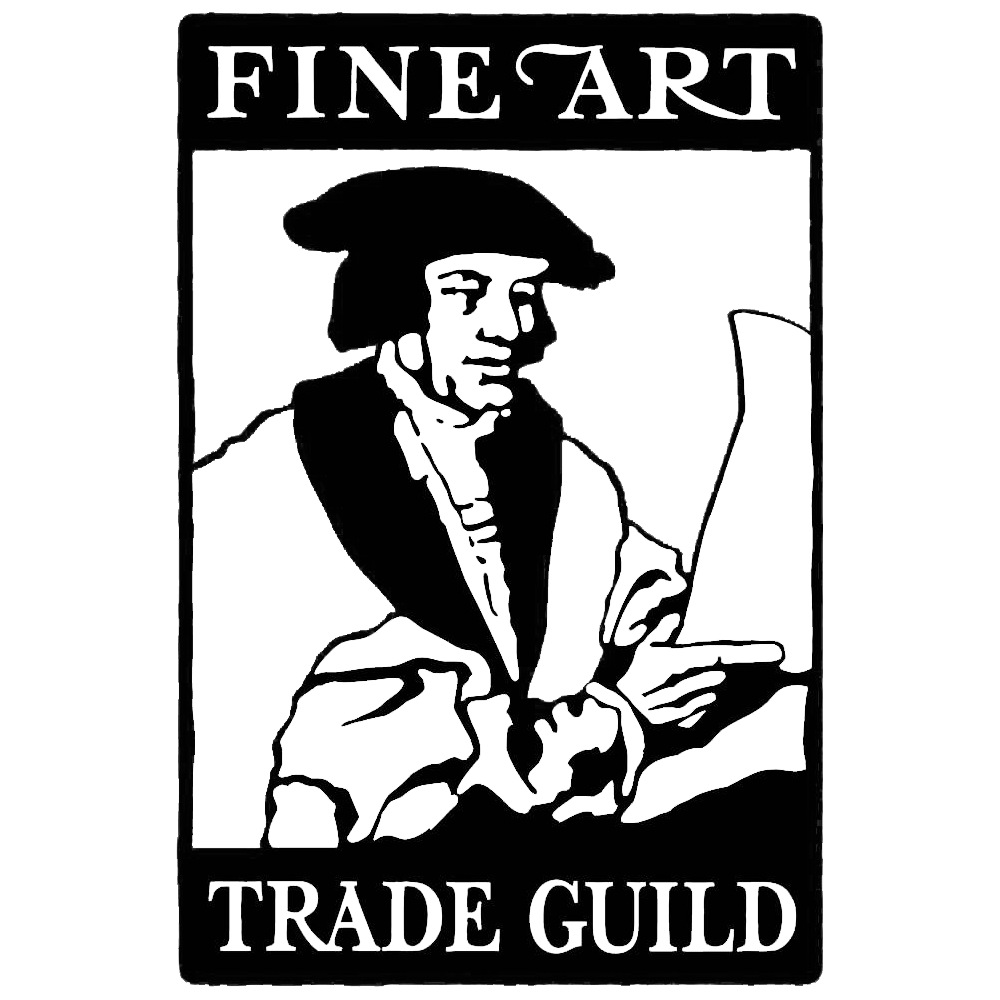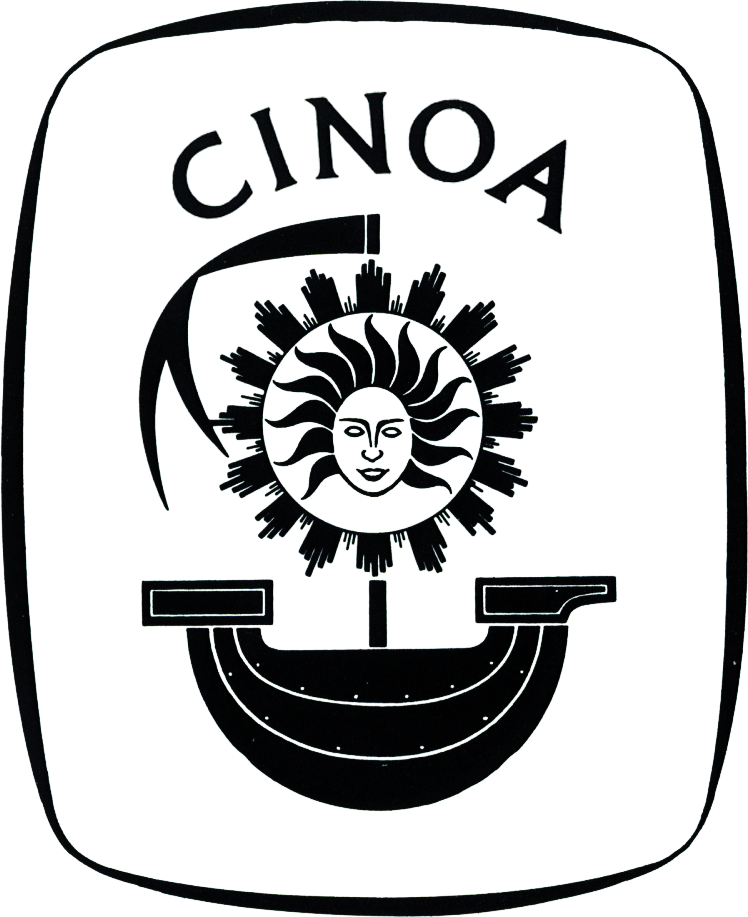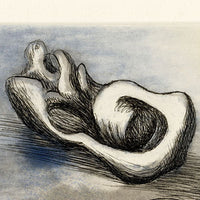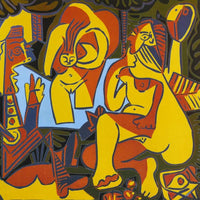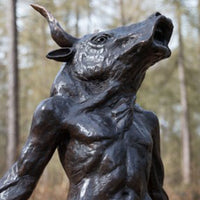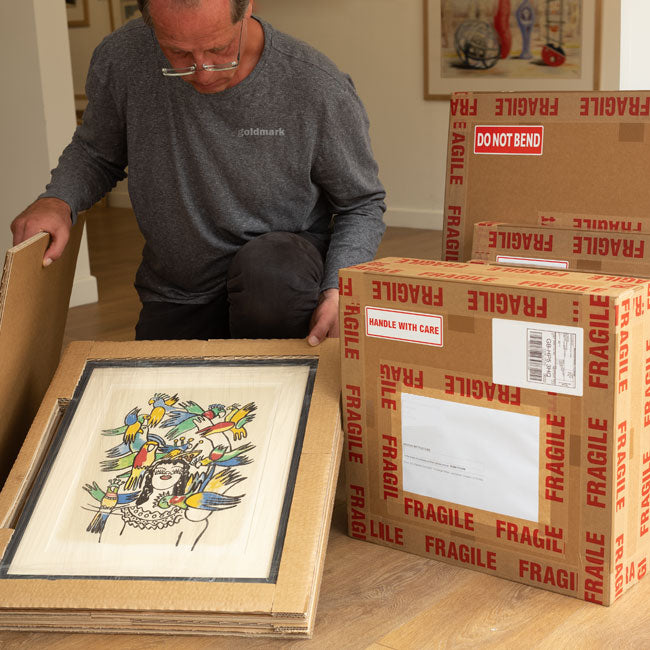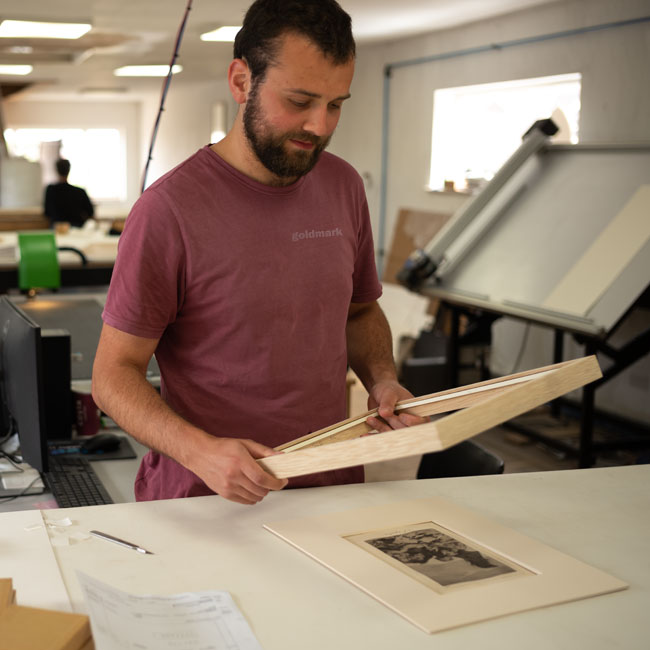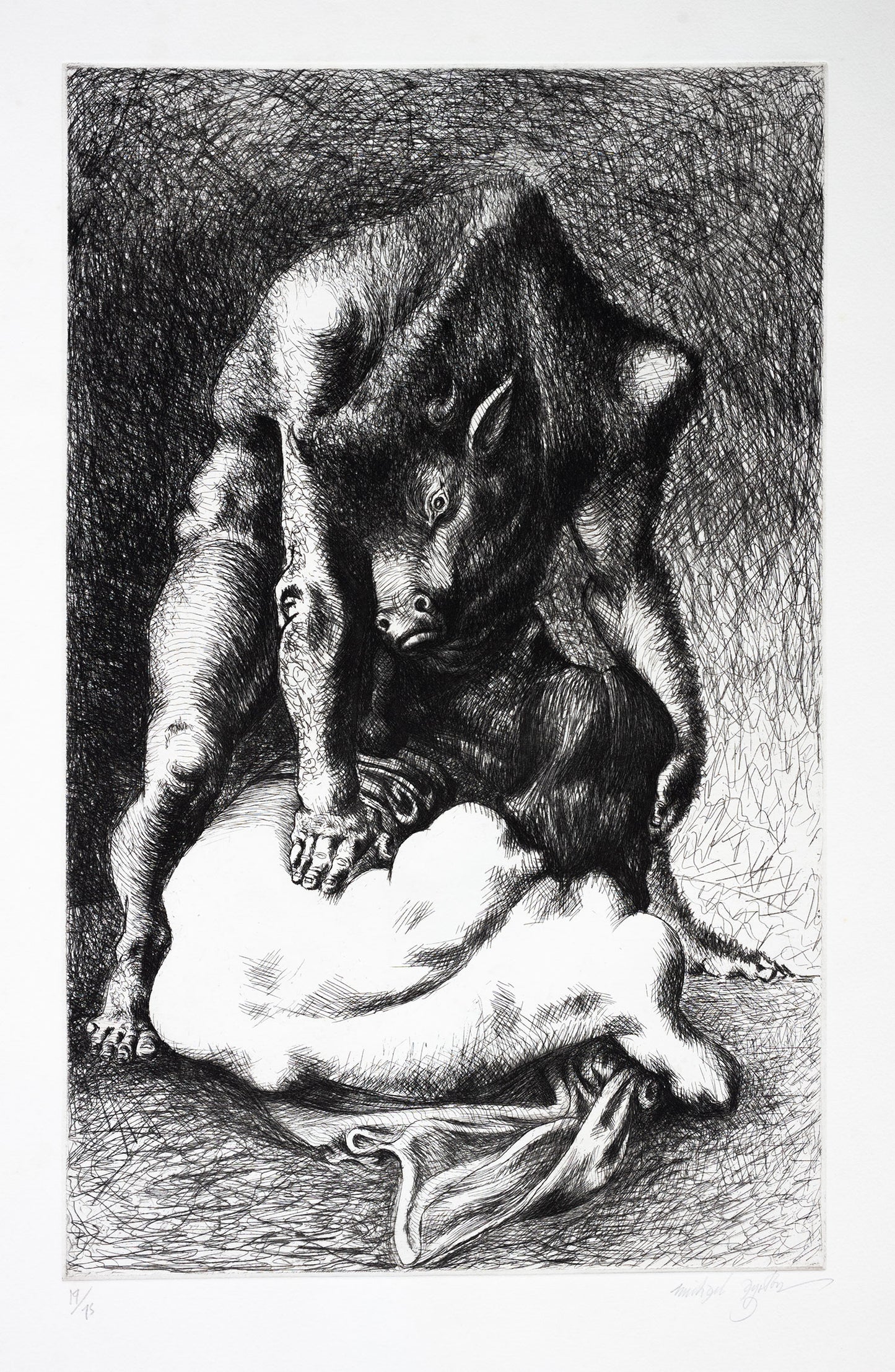Sometimes the word 'gallery' simply isn't enough. Yes, it's the core of a business dedicated to the best in painting, printmaking, sculpture and ceramics. But here the books turn into paintings, the paintings turn into films. Watch our short film to find out a bit more about us and what we do.

Full Grown, 1971
Interested in this item?
Start a conversation
This is an original artwork
held in stock at goldmark
Need it in a hurry?
Get in touch
Not completely delighted?
30 day free returns
Artist Information
About the Work
Dimensions & Details
Goldmark.tv
Delivery & Returns
Artist Information
Artist Information
Stay up to date with this artist

Stay up to date with this artist
Michael Ayrton, born in London in 1921, was an English artist best known for his sculpture (though he produced paintings and prints and wrote numerous articles, essays and radio broadcasts as well). Ayrton had plans for an artistic career from an unusually early age, leaving school at just 14 years old to start work as a painter.
Ayrton’s sheer determination and focus in his own work, his rejection of the artistic trends which flooded the mid-20th century, meant that he was all too isolated from mainstream criticism and he has remained relatively little known. He died in 1975 and is only now beginning to gain the attention he has long deserved.
Ayrton’s sheer determination and focus in his own work, his rejection of the artistic trends which flooded the mid-20th century, meant that he was all too isolated from mainstream criticism and he has remained relatively little known. He died in 1975 and is only now beginning to gain the attention he has long deserved.
Related Categories
About the work

About the Work
The minotaur was a powerful archetype which occupied Michael Ayrton for over ten years of his artistic life. Beginnning in 1961, Ayrton wrote and created many works associated with the myths of the Minotaur and Daedalus, the legendary inventor and maze builder. Works include bronze sculpture, the autobiographical novel 'The Maze Maker' (1967), and the 'Minotaur' Etchings (1971).
'At the centre of the Maze, in all meanings of the expression, is the Minotaur, and Michael Ayrton’s identification of himself with the Minotaur, as well as with Daedalus, lies at the root of his compulsive image. Half bull and half man, the Minotaur stands isolated among the hybrids of the Classical World, since he alone possesses an animal’s head attached to a human body. Whereas Satyrs and Centaurs symbolize the animal urges of man, held in check by civilization, the Minotaur represents, in the words of John Berger, the animal in captivity of an almost human form, and, the suffering which is caused by aspiration and sensibility being rejected because they exist in an unattractive, that is so untamed, uncivilized body. Either way the Minotaur suggests a criticism of civilisation, which inhibits him in the first case and dismiss him in the second.
During the last years of his life, Ayrton continued to explore the theme with further drawings and small bronzes. The Minotaur thus remained, in his frustration at being unable to communicate fully with the world, a potent symbol for Michel Ayrton, and his deep, if not obsessive, attachment to the theme was stated unequivocable by his Personal Janus of 1970.' Peter Cannon-Brookes, Michael Ayrton - An Illustrated Commentary, 1984.
Please note the edition number may vary from the image shown.
'At the centre of the Maze, in all meanings of the expression, is the Minotaur, and Michael Ayrton’s identification of himself with the Minotaur, as well as with Daedalus, lies at the root of his compulsive image. Half bull and half man, the Minotaur stands isolated among the hybrids of the Classical World, since he alone possesses an animal’s head attached to a human body. Whereas Satyrs and Centaurs symbolize the animal urges of man, held in check by civilization, the Minotaur represents, in the words of John Berger, the animal in captivity of an almost human form, and, the suffering which is caused by aspiration and sensibility being rejected because they exist in an unattractive, that is so untamed, uncivilized body. Either way the Minotaur suggests a criticism of civilisation, which inhibits him in the first case and dismiss him in the second.
During the last years of his life, Ayrton continued to explore the theme with further drawings and small bronzes. The Minotaur thus remained, in his frustration at being unable to communicate fully with the world, a potent symbol for Michel Ayrton, and his deep, if not obsessive, attachment to the theme was stated unequivocable by his Personal Janus of 1970.' Peter Cannon-Brookes, Michael Ayrton - An Illustrated Commentary, 1984.
Please note the edition number may vary from the image shown.
Goldmark.tv
Delivery & Returns
-
Our Free Bespoke Delivery
At Goldmark we understand the risks of sending delicate art and ceramics in the post, that’s why we hand package in made to measure boxes, frame and seal every purchase. If you do have an issue with your order, just get in touch with us and we can get it sorted for you as soon as possible.
-
Our Free Bespoke Frames
All eligible orders that include a frame with their delivery will receive a bespoke frame handmade by our dedicated talented team of frame makers. You can learn more about our frame making process here and what makes it so special.
Similar Works
-
A Gallery Supporting Real Artists
Goldmark is proud to have changed the lives of many living artists, enabling them to spend more of their time making pictures, pots and sculpture.READ MORE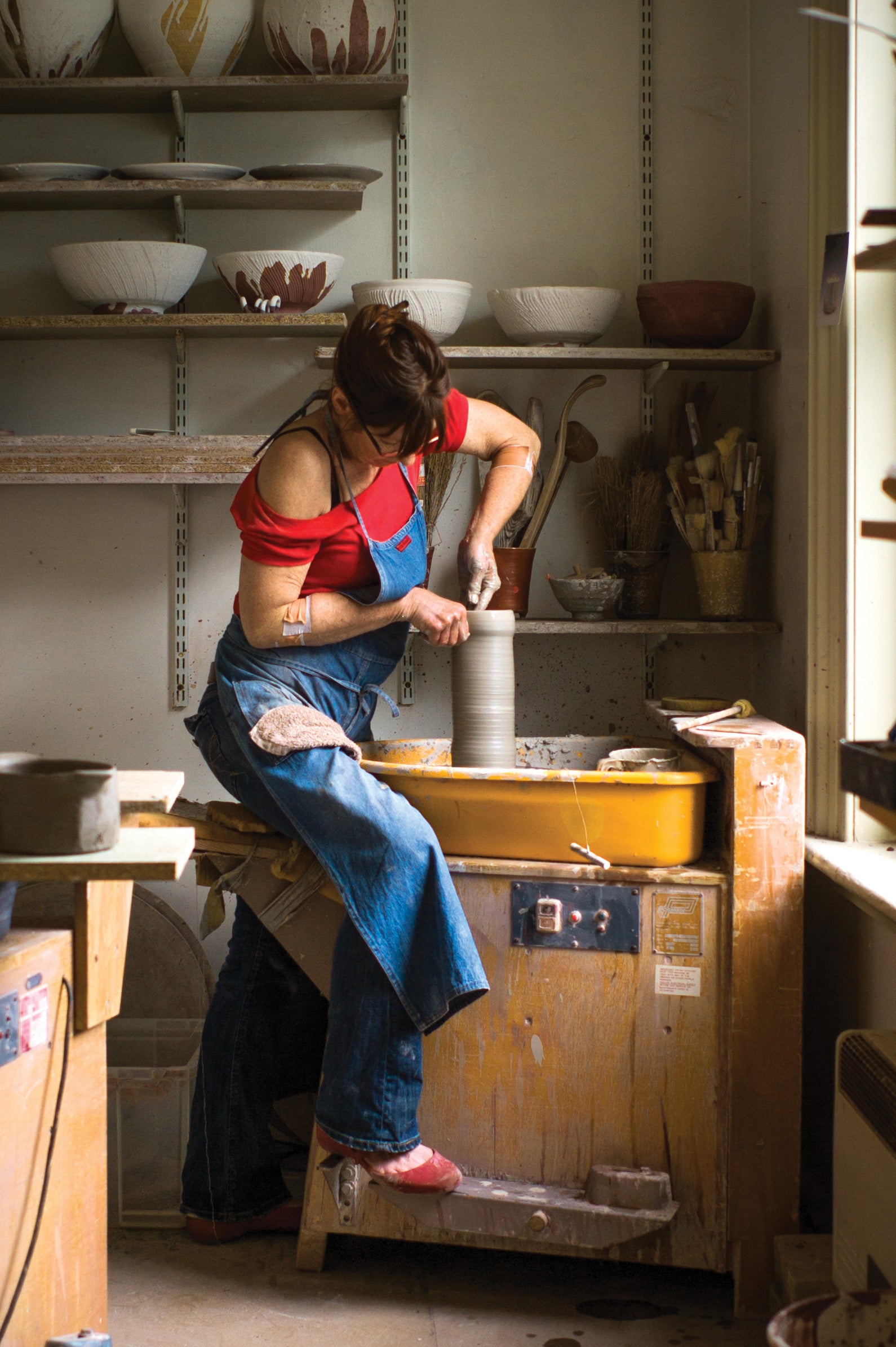
-
 Goldmark is delighted to be a member of the International Fine Print Dealers Association, the Fine Art Trade Guild and the Confederation Internationale de Negociants en Oeuvres d'Art.READ MORE
Goldmark is delighted to be a member of the International Fine Print Dealers Association, the Fine Art Trade Guild and the Confederation Internationale de Negociants en Oeuvres d'Art.READ MORE
